We know, the headlines can sound terrifying. In this series, Mashable speaks with experts to bring you the unvarnished truth about science, health, threats from space, and scary-sounding creatures. Sometimes, the monsters are just in our heads.
- These stories aren't about real danger; many of the objects pass millions of miles away. Rather, the stories are about sensationalism.
If a scary asteroid will actually strike Earth, here's how you'll know
A close encounter means a space rock isn't going to strike Earth, but NASA thinks it's still deserving of the public's attention, explained Johnson. It could be as small as a 30-foot (10-meter) rock, or it could be something bigger like Apophis. Other people might spot the close encounter of the rock (as all known NEO trajectories are posted online) and then announce or publish news of the unsettling flyby earlier than NASA. But that's OK. The agency will take at least a few hours to verify such results.
"Our goal is not to be the first to announce something, but to be the ones that provide the best information available," explained Johnson.
If NASA detects a possible impact — something larger than around 30 feet across (10 meters) with a greater than one percent chance of hitting Earth — things get serious... ... a significant impact is inevitable (unless we build technologies to successfully deflect threatening objects — so far NASA has once successfully demonstrated a deflection technology).
- On June 30, 1908, an asteroid, some 120 feet (37 meters) wide entered the atmosphere and then blew up over forested Siberia.
- Called the "Tunguska Event," the resulting shockwave mowed down trees. People 20 miles away were "thrown into the air." Forty miles away, the blast threw a man from his chair.
The Tunguska rock, heating up as it traveled tens of thousands of mph through Earth's atmosphere, exploded. In stark contrast, a larger asteroid (some 100 to 170 feet wide) survived the atmospheric plummet and left a 600-foot-deep crater in Arizona 50,000 years ago. "A similar-size impact event today could destroy a city the size of Kansas City," David Kring, an impact expert at the Lunar and Planetary Institute, told NASA.

Such a blast could harm or devastate an urban area today. "That would be a serious event," said Johnson. But, he added, "Today there is a strong possibility that we would detect it beforehand."
By Erik M. Conway, Donald K. Yeomans, and Meg Rosenburg
In 2016, NASA took on a new responsibility: defending our planet from devastating impacts by asteroids and comets that approach the Earth, or near-Earth objects. That event, which followed the prominent Chelyabinsk meteor explosion in 2013, reflected a growing interest in, and concern about, the threat of celestial impacts. In ancient times, the solar system’s small bodies—asteroids and comets—were sometimes seen as ill omens and warnings from the gods. In modern times, they have come to be seen as the solar system’s rubble, leftovers from its formation, but were still largely ignored until the late 20th century. Increasingly, they have been seen by scientists as objects worthy of study, by the general public and the U.S. government as potential threats to be mitigated, and by space advocates as future resources. This book tells the fascinating story of these reinterpretations and NASA’s role in them.
- Using big telescopes, NASA's Center for Near Earth Object Studies looks for asteroids and comets (called near earth objects, or NEOs) that "enter Earth's neighborhood,"
Researcher visits the Odessa Meteor Crater — hoping it will help prepare humanity for future asteroid strikes
Planetary geologist Ania Losiak is scouring the Odessa crater for the remains of plants and creatures killed by the small asteroid in hopes to better understand what happens when asteroids strike the Earth.
From Marfa Public Radio:
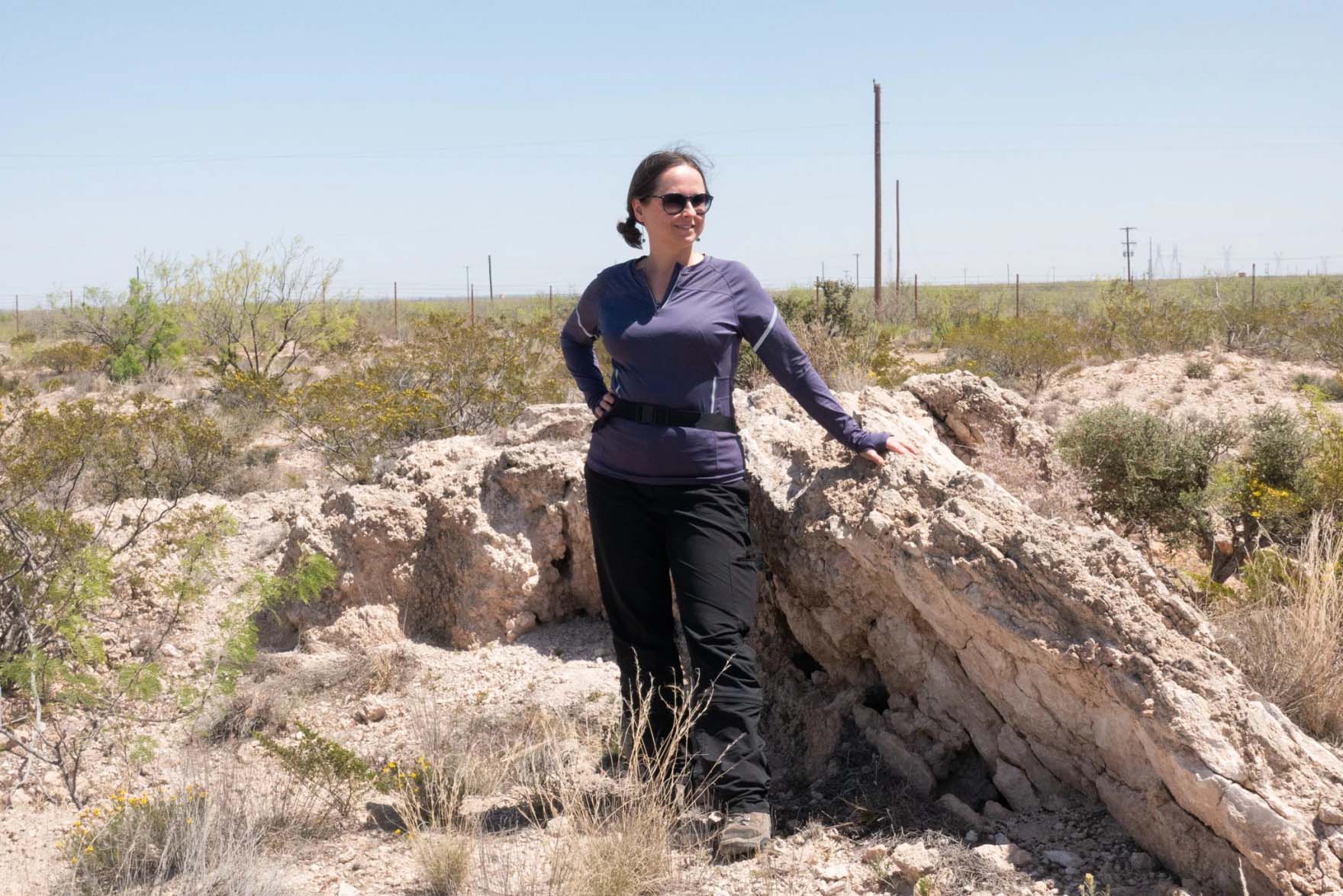
Mitch Borden / Marfa Public Radio
Planetary geologist Ania Losiak researches asteroid craters around the world and visited the Odessa Meteor Crater earlier this year.
Rocks jut out of the ground at the Odessa Meteor Crater, where there are signs warning visitors to watch out for snakes and pumpjacks rocking back and forth in the distance. But about 60,000 years ago, when woolly mammoths and saber-toothed tigers roamed the Earth, an asteroid slammed into what is now known as West Texas.
It may not look like much to the untrained eye, but peering out over the Odessa Meteor Crater Ania Losiak sees the power small asteroids can leave in their wake. As a planetary geologist, she studies craters around the world and is interested in finding what these geological features can reveal about asteroid strikes.
“You can see what happens when extraterrestrial material impacts the Earth with hypersonic velocities,” Losiak said during her most recent visit to the crater site. “Sometimes very deadly and terrible things are also very exciting.”
- Losiak is a Fulbright scholar currently working with the Lunar Planetary Institute in Houston and the U.S. Geological Survey in Flagstaff, Arizona. She has wanted to visit Odessa’s crater for years, but until recently she had to postpone her trip to West Texas.
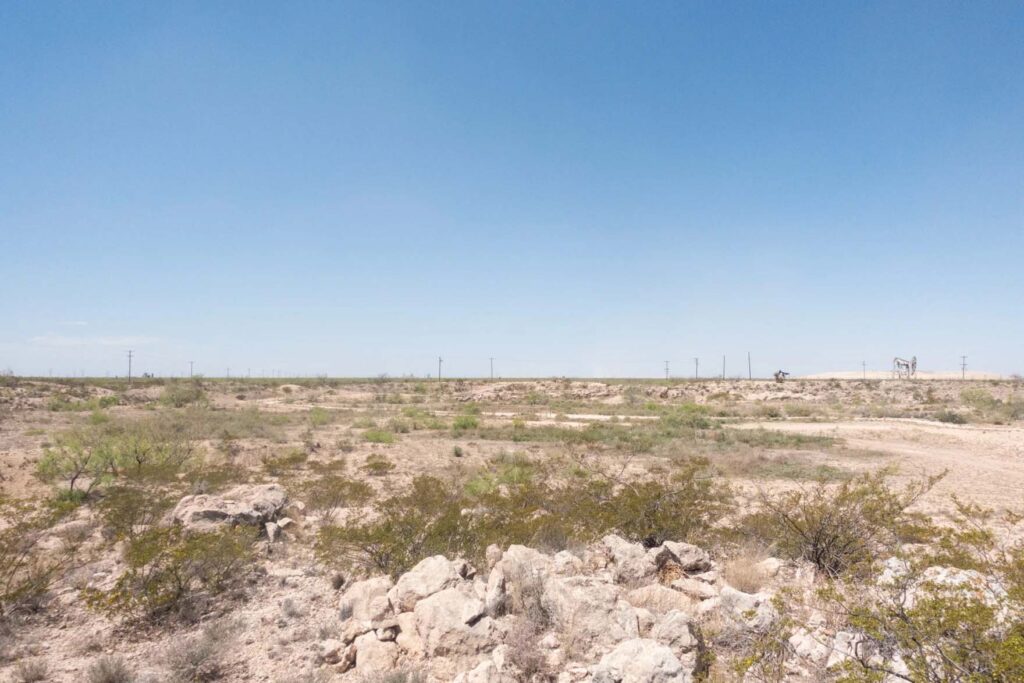
The Odessa Meteor Crater was formed around 60,000 years ago when a small asteroid the size of a car smashed into what is now West Texas.
Mitch Borden / Marfa Public Radio
The reason the crater is shallow is for thousands of years sediment and soil has washed into the crater. On top of that, the asteroid that made it was small by space standards, which is what piqued Losiak’s curiosity.
Instead of focusing on the giant asteroids like ones shown in Hollywood blockbusters like “Armageddon” or “Don’t Look Up” — she is more interested in minor space rocks, like the one that made Odessa’s crater, which was about as big as a midsize car.
Pointing at stones emerging from the ground like rows of jagged teeth, she explained that smaller asteroids are still powerful.
- “It’s absolutely crazy.”
The asteroid hit so hard, according to her, that it caused an explosion equivalent to an atomic bomb and if anyone or anything had been in the middle of the crater when it struck, their death “would be very quick — you would not feel a thing.”
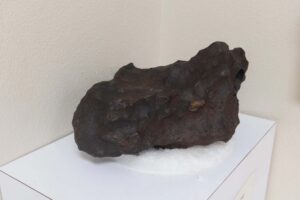
Over the years, multiple Meteorites have been found near Odessa’s crater. One of these is on display at the small museum dedicated to the national natural landmark.
Mitch Borden / Marfa Public Radio
She explained, “Only by studying Odessa and other craters we are able to understand how far do we need to evacuate people if we know within the next day, or so, there will be a collision.”
This isn’t a hypothetical threat. Smaller asteroids are much more likely to strike Earth than larger ones — which the Russian city of Chelyabinsk found out in 2013. Without warning, an asteroid, around the size of a house, suddenly appeared and exploded over the city, shattering windows and injuring over 1,600 people, according to NASA.
“Smaller objects are much fainter,” according to Davide Farnocchia, a navigational engineer with NASA’s Center for Near Earth Objects Studies. “They’re harder to pick them up when they are far, so you can only detect them when they are making their final approach to Earth.”
He calculates the trajectories of asteroids in our solar system to figure out if they will strike our planet. Situations like the asteroid that exploded over Russia are a once in a lifetime event. But Farnocchia said it is good to have plans in place if an astronomer suddenly spots an asteroid hurtling toward a city.
“If you had something like Chelyabinsk that you discovered 10 days before impact what would you do? Well, you need to notify the government of the country affected and support evacuation,” he explained.
- NASA has found 90% of all asteroids that will come near Earth’s orbit and are a kilometer or larger in diameter, but according to Farnocchia, we are far off from being able to reliably detect smaller objects like the asteroid that made the crater near Odessa.
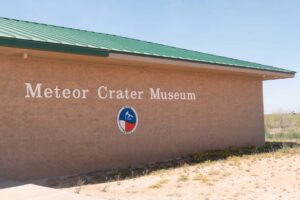
There is a small museum located at the Odessa Meteor Crater dedicated to educating visitors about meteors and asteroids.
Mitch Borden / Marfa Public Radio
The destructive power that minor asteroids can unleash amazes Losiak, which makes exploring craters thrilling for her. Even though it could be decades before another asteroid poses any kind of threat, she believes humanity should try to be as prepared as possible.
Losiak said, “Only if we know exactly how those things were happening in the past, we are able to avoid [a] similar fate in the future.”
She plans on returning to West Texas next year with a team of researchers to scour the Odessa Meteor Crater to see what it will reveal.







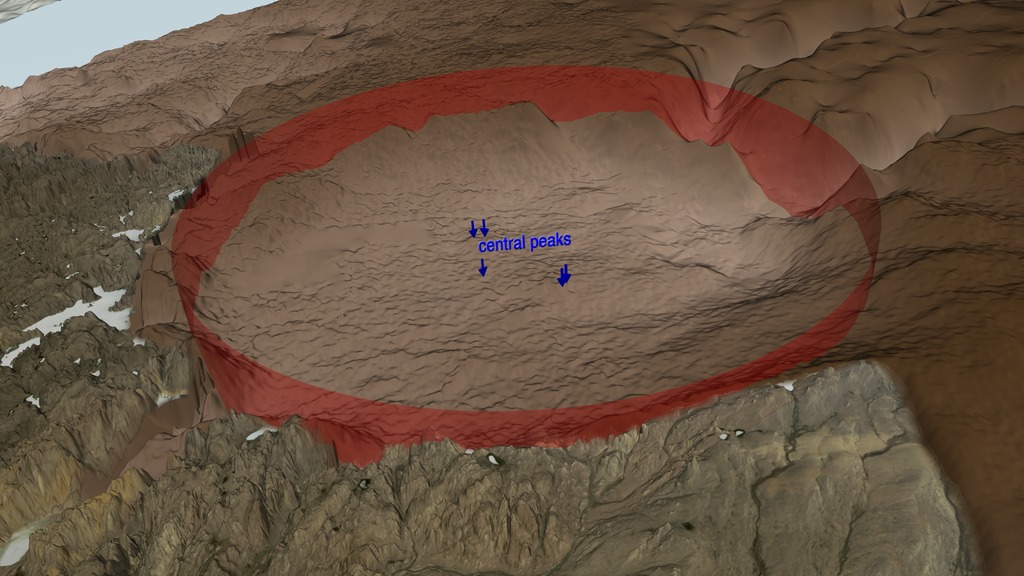
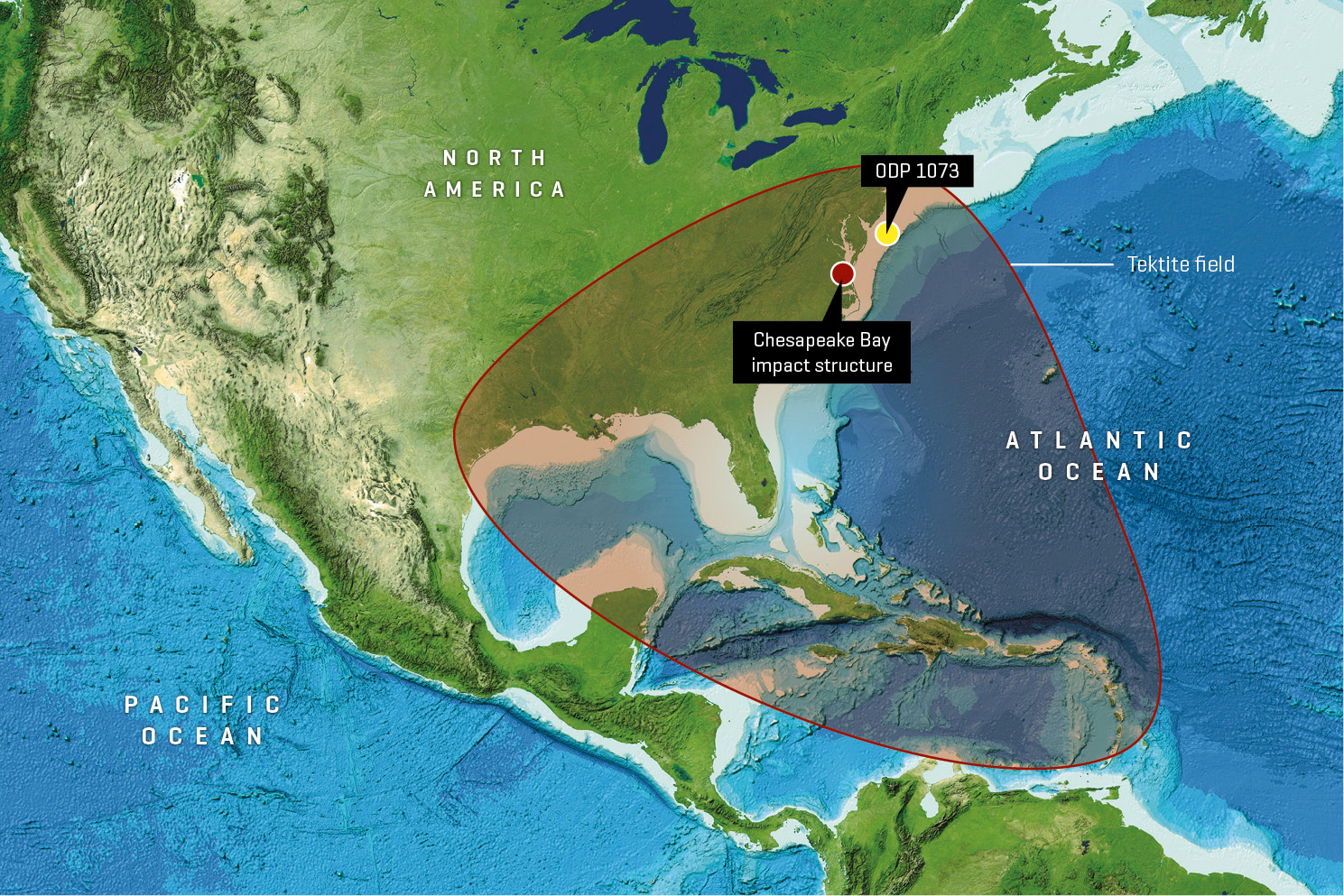




.jfif)
No comments:
Post a Comment